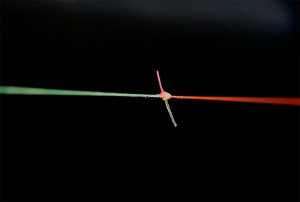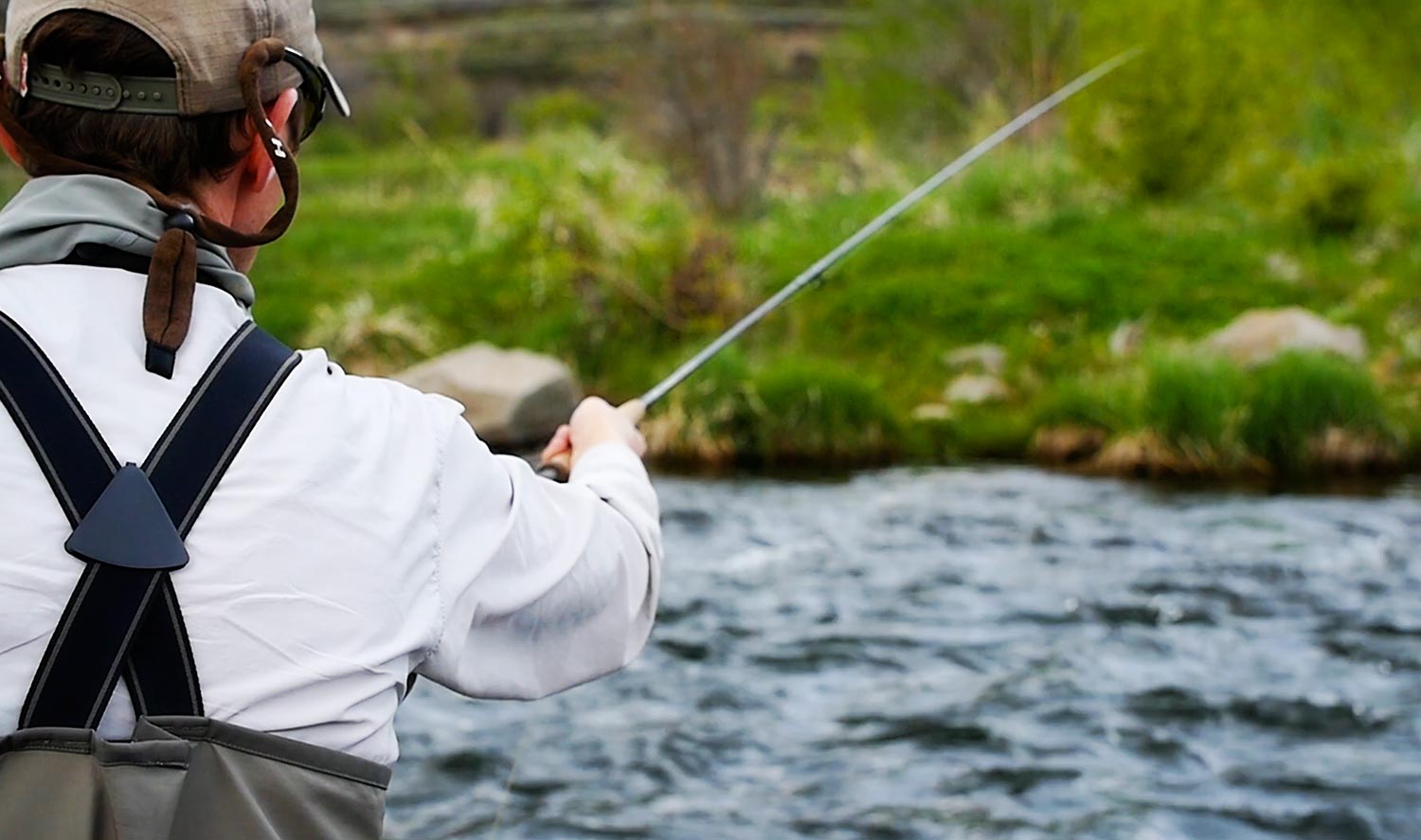By Devin Olsen
I grew up fishing many of the fabled tailwaters of the American West.
Throughout high school and my early college years, I would travel around to find the biggest and pickiest small fly eaters I could find. Having immersed myself in this fishing environment and culture, I became a dyed-in-the-wool suspension/strike indicator nymph fisherman; with some indicatorless sight fishing thrown in for good measure. You couldn’t convince me there was a better way of catching numbers of fish on most trout rivers. The last few years have had a way of convincing me I was wrong.
In 2005 I started working with Fly Fishing Team USA members Lance Egan and Ryan Barnes in a fly shop. I was immediately intrigued by the competitions they were fishing in and the possibility that I could represent our country in international competitions. There was only one problem, the typical split shot and indicator game I was so accustomed to was not legal in FIPS Mouche governed competitions like the World Fly Fishing Championships. Suddenly I had to rethink and relearn my nymphing approach and find other alternate ways of being effective. Thankfully I learned a lot from Lance and Ryan; especially the long French leader style of European nymphing that Lance began to use after the 2007 World Fly Fishing Championships in Portugal. Now, after 11 years of competing with Fly Fishing Team USA, a lot of comparisons on the water, and two team and one individual World Fly Fishing Championship medals, I’m convinced that European style nymphing is more effective than strike indicator/suspension nymphing in most water types.
To illustrate the reasons why I believe European nymphing methods are often more effective, watch the embedded video clip, which is an excerpt from the film Modern Nymphing: European Inspired Tactics; which Lance Egan, Gilbert Rowley and I just released last month. For some more in-depth explanation, the list below explains what I view as the pros and cons of European vs. suspension/strike indicator style nymphing.
Pros of Euro nymphing:
 Euro nymphing provides improved strike detection via a direct connection. No mending means you’re always ready to set the hook. When suspension nymphing, your rig must sink and attain tension to register a strike and your indicator must land in the same seam of current to maintain a good drift and strike detection. Often there is slack between the indicator and flies that reduces strike detection and flies often land in seams of current moving at different speeds or in different directions than your indicator. This kills your drift and your strike detection. Furthermore, constant mending creates times when it is difficult to quickly set the hook before the fish has expelled your fly.
Euro nymphing provides improved strike detection via a direct connection. No mending means you’re always ready to set the hook. When suspension nymphing, your rig must sink and attain tension to register a strike and your indicator must land in the same seam of current to maintain a good drift and strike detection. Often there is slack between the indicator and flies that reduces strike detection and flies often land in seams of current moving at different speeds or in different directions than your indicator. This kills your drift and your strike detection. Furthermore, constant mending creates times when it is difficult to quickly set the hook before the fish has expelled your fly.- Strike indicators act like a kite in the surface currents, pulling your rig at a different speed and/or direction than the bottom currents where your flies are. The Euro nymph rig only has tippet on or in the water, so there is less drag from surface currents that do not have the same speed or direction of your drifting fly. Better drifts = more fish, especially in complex water types with fast current speeds and turbulence. This is most evident in pocketwater and eddies where your strike indicator may land in a current seam that is flowing the complete opposite direction of where your flies land. When Euro nymphing in pocketwater, holding your sighter (a built in monofilament strike indicator) off the water eliminates the issue of conflicting currents which cause drag between nymphs and a strike indicator.
- Indicators make large surface disturbances on the water when they land, are mended, and when setting the hook. Long leader Euro nymphing rigs land light on the water and come off when setting the hook with much less disturbance than a strike indicator. Less surface disturbance = less spooked fish.
- Euro nymphing provides a better fish hooked-to-landed ratio due to less slack in the system and more strikes coming at close range and fewer strikes coming downstream. Strike indicator rigs provide longer drifts but much of the first half of the drift is inefficient while your rig sinks and tracks in line before attaining tension and strike detection. Therefore, most of your takes end up in the latter half of your drift when fishing a strike indicator. This creates inferior hooking angles and more lost fish.
- With a Euro nymph rig, you control the depth your fly’s reach by allowing more or less leader to enter the water. A quick fly change adjusts your weight and further manipulates your depth control. There is no need to move your indicator and repeatedly remove or attach split shot to adjust for the myriad of depths and current speeds you encounter on the river. This allows you to fish water types from inches to many feet deep without changing your rig.
- It is easy to move flies for an induced take with a lift of the rod when Euro nymphing. This can be deadly during insect emergences or when fish have seen repeated dead drifts. Moving your flies requires moving your indicator when suspension nymphing. This causes surface disturbance and can track your indicator laterally across the river into different seams of current than where your flies are drifting.
Cons of Euro nymphing:
- Indicators allow a greater radius of presentation so you can fish further away than Euro nymphing. This is an advantage when deep or clear water prevents close proximity to fish.
- Indicators suspend flies smoothly and can provide better drifts in slow water with a uniform depth. On long and slow drifts, your shoulder may fatigue after a while and your rig may shake a bit which results in unnatural movement during the drift.
- It is difficult to build enough weight into flies, smaller than a size 16, to fish them at depth. To attain depths of more than a few feet with micro flies, a larger fly must be fished on the rig in addition to the small fly or flies.
If you are interested in learning how to Euro nymph, we hope you will consider purchasing our film. You can watch the trailer and purchase the digital download on Vimeo ($19.99). The DVD ($29.99) is available at Tacticalflyfisher.com. See the links below.
https://vimeo.com/ondemand/modernnymphing
Devin Olsen Gink & Gasoline www.ginkandgasoline.com hookups@ginkandgasoline.com Sign Up For Our Weekly Newsletter!


Euro nymphing for carp eating nymphs in lakes seems like a good idea.
How close are carp to shore? That seems like a challenging feat.
Great simple and easy to understand write-up Devin. I’m still annoyed your giving away your A game strategies to all my fellow streamside buddies the video is awesome , great pic quality and explanation on your setups ,bugs and fish fighting strategy
Devin,
I’ve been practicing Euro techniques for almost a year now by watching George Daniel on YouTube. Since I started to tight line nymph I have increased my catch 10 fold and have found a new love for fly fishing.
Thanks for the post.
Steve
I’m thinking about adding a tight line specific rod to my fly fishing arsenal, but I have a couple questions. In the area I fish, there are times where tight lining seem like it would be best but there are also big water situations which would require an indicator. Will I still be able to use say yarn or smaller thingamabobber style indicators using a 10’ 3wt fly rod or would I have to sacrifice tightline sensitivity and move up to a 10’ 4wt or 5wt fly rod?
Cool article! Thanks!
There is some question as to whether Euro-nymphing is legal in Maine on FFO waters. We have a new Director at MDIFW – so maybe we’ll get some clarification.
-Kasey @foxtrickflies
While I’ll agree with Euro being better than indicator in most cases, using that plastic indicator was using the worst case scenario. Corq’s or New Zealand methods are let noisy and more sensitive. The video sort of slapped them on the water and it might have been done a little harder than “normal”. Even Euro experts will tell you that there are instances where the indicator is better.